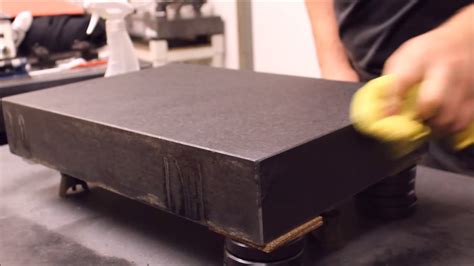A Beginner's Guide to Hand-Flattening Granite
Granite, with its stunning beauty and incredible durability, is a coveted material for countertops, flooring, and other applications. But achieving a truly flat, polished surface often requires meticulous work. While machinery can achieve this quickly, hand-flattening granite offers a unique connection to the material and a rewarding challenge for those seeking a deeper understanding of stonework. This beginner's guide provides a step-by-step process, addressing common questions and concerns.
What is Hand-Flattening Granite?
Hand-flattening granite involves using hand tools to progressively level and polish a slab of granite to a perfectly flat and smooth surface. This is a laborious process, requiring patience, precision, and the right tools, but the result is a uniquely satisfying and rewarding accomplishment. It's crucial to understand that this isn't a quick process; expect to dedicate significant time and effort.
What Tools Do I Need for Hand-Flattening Granite?
This is a crucial step. The wrong tools can lead to frustration and damage. You will need:
- A granite slab: Obviously! Start with a smaller slab for practice.
- Multiple grits of sandpaper: Start with coarse (e.g., #80 grit), gradually progressing to finer grits (#120, #220, #400, #600, #800, #1000, #1200, #1500, and even #2000 for a high polish). You'll need plenty of each grit.
- A flat, stable surface: This is crucial for accurate work. A sturdy workbench or large, level concrete slab is ideal.
- Water: Lots of it! Water acts as a lubricant to prevent clogging and improve the sanding process.
- Sponge or cloth: For cleaning the surface between grits.
- Polishing compound: After the final sanding grit, a polishing compound will help achieve a high-gloss finish. Diamond polishing compounds are effective.
- Safety Glasses: Protect your eyes from flying debris.
- Dust Mask: Granite dust can be harmful to your lungs.
- Gloves: Protect your hands from abrasions and chemicals.
How Do I Choose the Right Granite Slab?
Choosing the right granite slab is crucial for a successful project. Opt for a smaller, less valuable slab for your initial attempts. This allows you to practice without significant financial risk. Inspect the slab carefully for any cracks or significant flaws before starting.
What's the Process of Hand-Flattening Granite?
The process involves several stages:
-
Assessment and Planning: Carefully examine the granite slab to identify high and low points. This will guide your sanding strategy.
-
Coarse Sanding: Start with the coarsest grit sandpaper (#80). Work systematically, applying even pressure across the surface. Focus on removing high points. Use plenty of water.
-
Progressive Sanding: Gradually move to finer grits of sandpaper. After each grit, clean the surface thoroughly with water and a sponge to remove debris. Continue until you achieve the desired level of flatness.
-
Polishing: Once you reach the finest grit sandpaper, use a polishing compound to achieve a high-gloss finish. This step requires careful application to avoid streaking.
-
Final Inspection: Carefully inspect the surface for any remaining imperfections. You may need to repeat certain steps to perfect the finish.
How Long Does it Take to Hand-Flatten Granite?
This is highly variable, depending on the size and condition of the slab, your experience level, and the desired level of finish. It can take anywhere from several hours to several days, or even weeks for larger slabs.
What are Common Mistakes to Avoid When Hand-Flattening Granite?
- Skipping grits: This will lead to an uneven surface.
- Applying too much pressure: This can cause scratches and damage the slab.
- Not using enough water: This can clog the sandpaper and hinder progress.
- Not cleaning the surface properly between grits: This can leave behind debris that will scratch the surface with finer grits.
Can I Use a Power Tool for Hand-Flattening Granite?
While traditionally done by hand, some individuals use angle grinders or other power tools with specialized sanding attachments. However, this requires considerable skill and experience to avoid damaging the granite. It's strongly advised to master the hand-sanding technique before attempting power tool methods.
This guide offers a solid foundation for beginners embarking on the challenging but rewarding journey of hand-flattening granite. Remember patience and persistence are key to achieving a beautifully flat and polished surface. Remember always prioritize safety by using appropriate protective gear.

